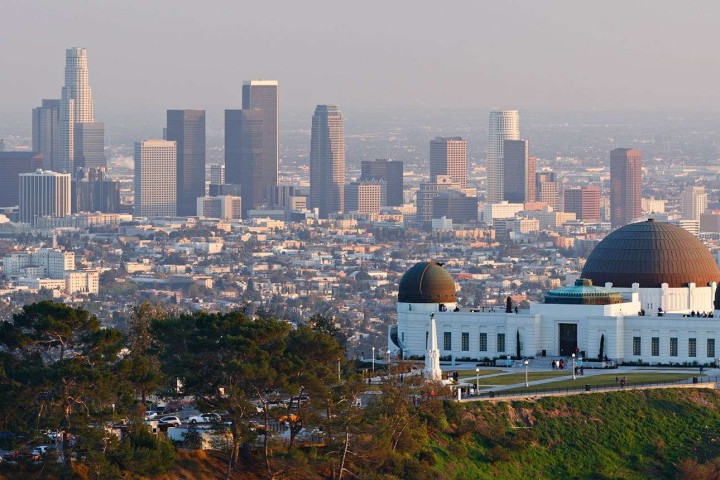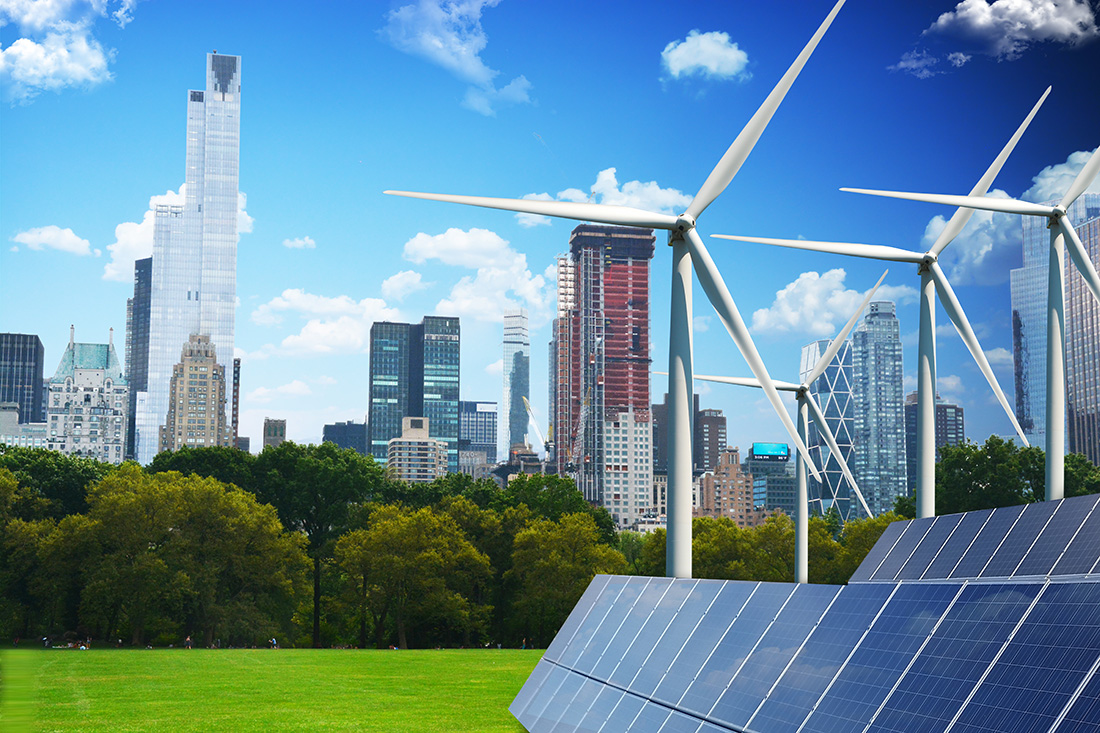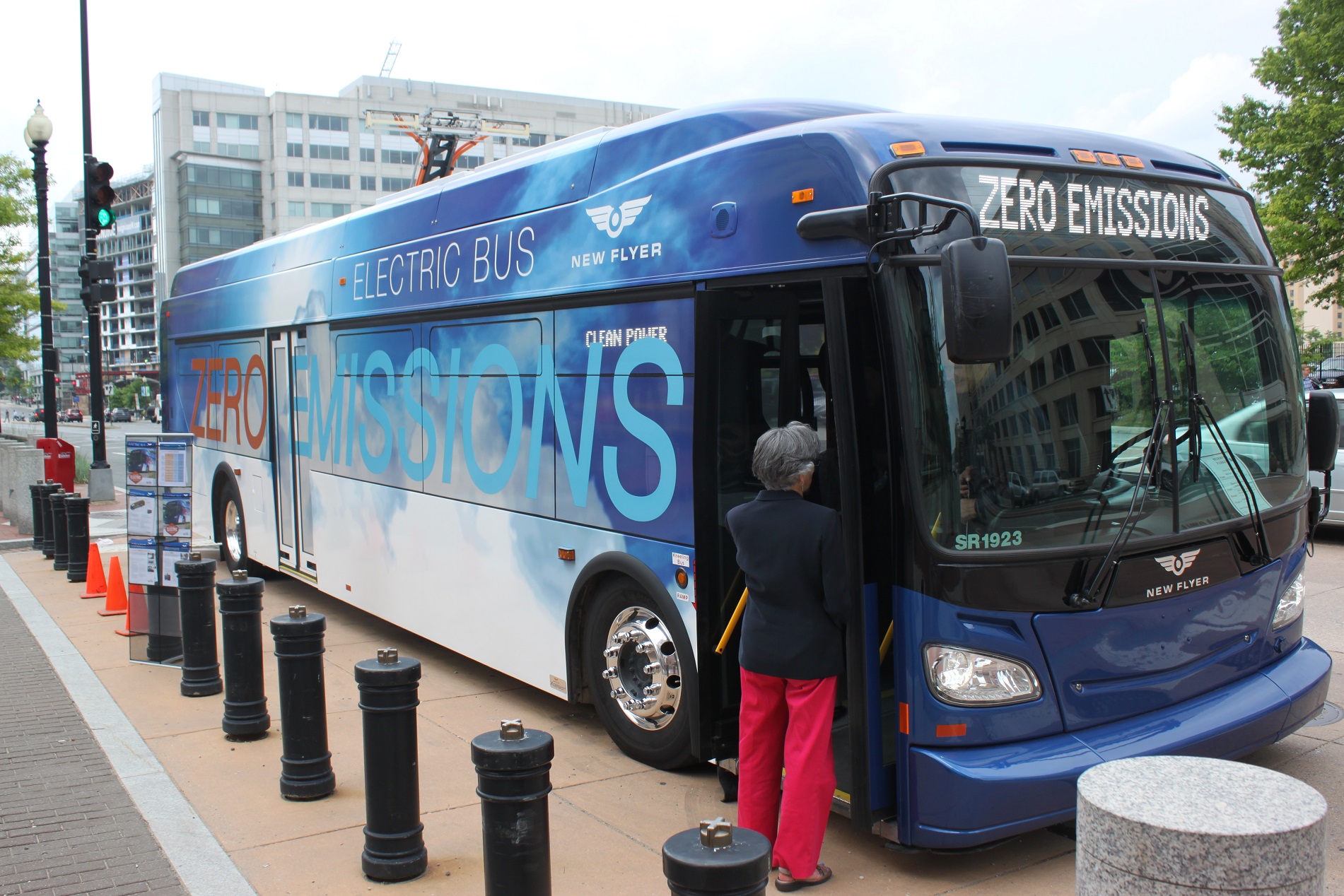ZERO EMISSIONS TRANSPORTATION
Right now, most Angelenos commute to work as the sole occupant of a car. Last year, each one spent an average of 128 hours stuck in traffic. L.A. wants to get more commuters into public transit and is expanding its subway and metro lines to help, along with building new housing next to transit centers. Garcetti says that his administration has paved more streets than any in LA’s history, but “who cares about potholes if Venice is underwater.” The city is also building the infrastructure to help people who keep driving make the switch to electric cars—including 25,000 new electric charging stations by 2025. Crosswalks and routes to walk to school will become safer. To make it easier to walk in hot weather, the city is planting shade trees and adding cool pavements. The network of bike lanes and bike sharing will expand. School buses and taxis will reach zero emissions by 2028; urban delivery vehicles will reach that goal by 2035. By 2050, every vehicle in the city will have zero emissions.
REDUCING RELIANCE ON IMPORTED WATER
More than a century ago, L.A. essentially stole water from the Owens Valley 200 miles away. The city also relies on water from Northern California and the Colorado River. Now, however, it wants to begin to source the majority of its water locally. Rain that typically flows over pavement and into storm drains will be captured through a “sponge city” design of permeable pavement and rain gardens. All wastewater will be recycled by 2035. As drought becomes more likely, the city will also continue to cut water use.
ENVIRONMENTAL JUSTICE
As L.A. transforms, the city is focusing particularly on the poorest communities, which have been hardest hit by environmental problems like air pollution in the past. Several projects will directly impact neighborhoods—cutting emissions from ships at the ports, for example, is helping reduce childhood asthma rates in Long Beach. In Watts, the Jordan Downs public housing project is being rebuilt into an affordable community with electric car sharing, solar power, new bike lanes, thousands of new trees, and 50 small urban farms.
The city’s plans encompass multiple other sustainability goals, including zero waste going to landfills by 2050, planting 90,000 new trees, adding multiple new parks, a new wildlife corridor, a huge amount of new housing, and a plan to phase out oil and gas production in the city and county. All of the changes are also creating jobs. By 2035, the city expects to have 300,000 new green jobs. “We expect to see a significant amount of economic opportunity,” says O’Connor. Since Garcetti took office in 2013, the city has seen roughly 35,000 new green jobs (To put that in perspective, there are only around 50,000 jobs in the coal industry in the entire country).
By 2025, the city expects to be able to cut its emissions in half compared to a decade earlier, a pace faster than what’s called for in the latest UN climate report. “Climate change is a global emergency,” says Garcetti. “There’s no greater threat to our national security, our economic growth, to the very survival of our cities, our world, and future generations. And obviously we don’t need more studies to show us the reality about climate change. We just have to look out the window.”




